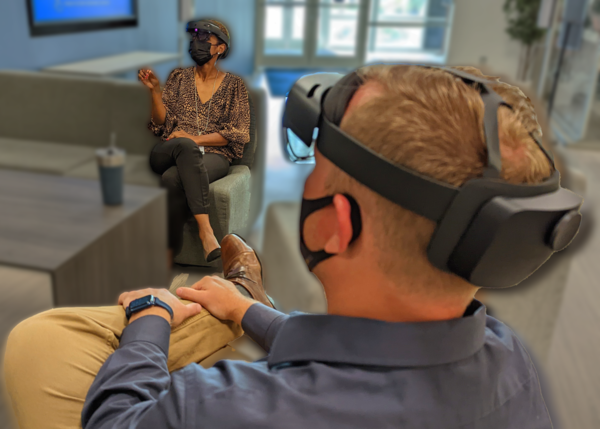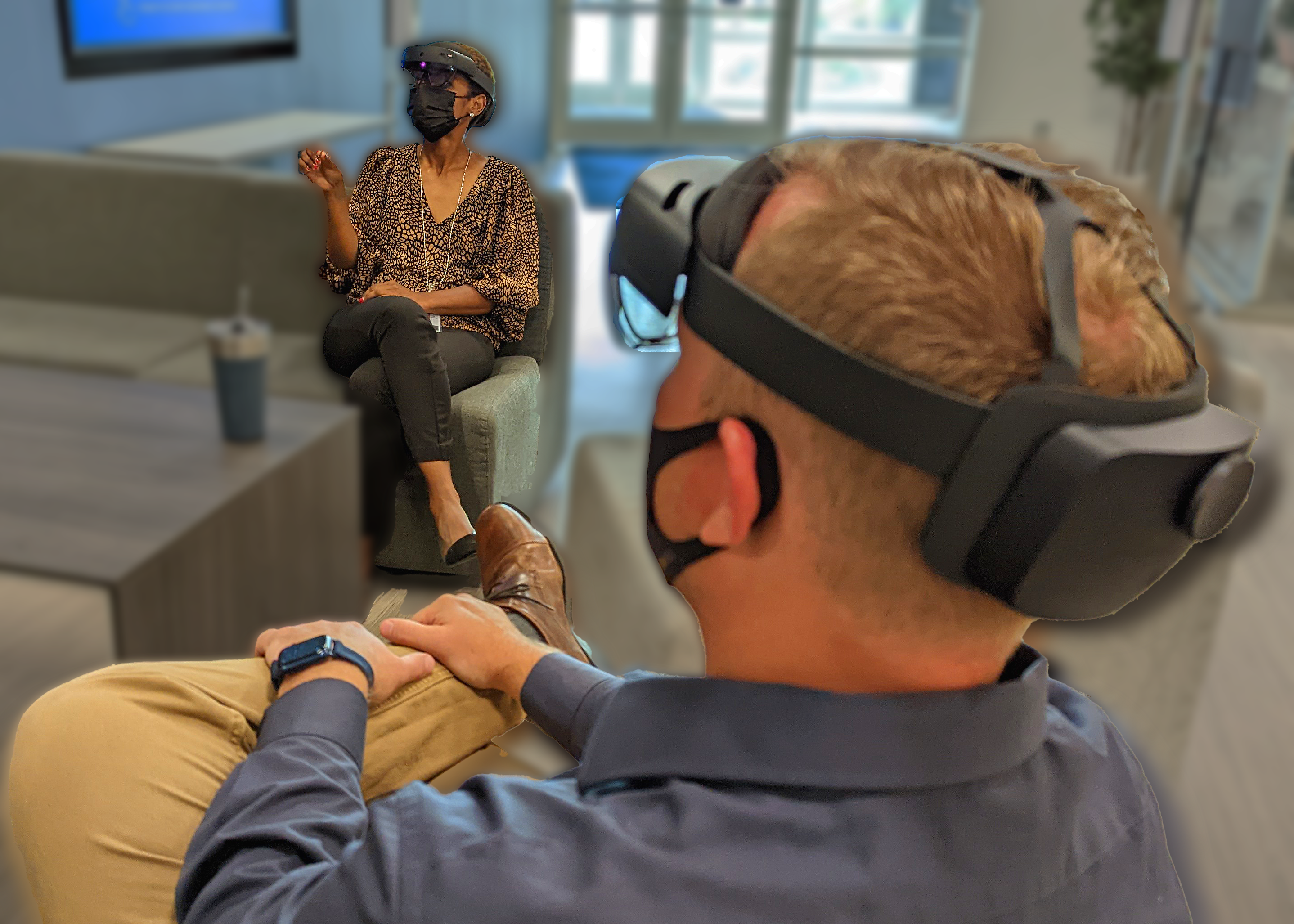Demo the technology yourself in October and November
HSIS is hosting two extended reality demonstrations at 333 Cedar Street:
- Thursday, November 3 from 9:30am – 11:30am at the IT Support Service Center Grand Opening
- Tuesday, October 18 from Noon – 1pm in the Medical Library
Stop by, put on a headset and experience virtual and augmented reality applications for yourself.
Training for health care professionals typically includes a variety of media or simulated symptoms or situations to understand human anatomy and patient medical conditions. These traditional techniques have their challenges. For example, the intricacies of the human heart cannot be conveyed through a two-dimensional image. Creating an in-person simulation can be costly in terms of faculty time, equipment, and facilities.
Recent improvements in virtual reality (VR) and augmented reality (AR) technologies – collectively referred to as extended reality (XR) – are starting to provide more interactive and scalable training alternatives. Different from passive learning activities such as viewing YouTube videos, XR technologies make learning experiential and interactive.
HSIS staffer Randy Rode is leading a project this fall to help medicine and nursing faculty and students explore AR and VR for clinical training applications. The project began by assessing the landscape through conversations with peer institutions, vendors, and recent research. The project team has identified several products for closer testing and demonstration with our community.
- Microsoft Dynamic 365 Guides uses the Microsoft Hololens augmented reality headset to render instructional overlays on the real world. These virtual overlays provide an intuitive way for a student to train on a piece of medical equipment or make their way through a medical procedure utilizing a mannequin. The student has the flexibility to repeat a training scenario multiple times until they get it right without the need for a dedicated human trainer or physical setup. The University of Michigan School of Nursing simulation center has had terrific success utilizing Guides to improve student outcomes while freeing up faculty time.

- There are several human anatomy visualization applications under review including AnatomyX. AnatomyX enables groups of up to 10, each in their own headset, to view, manipulate, dissect and discuss a shared anatomy model. These shared sessions can include both co-located and remote participants.

- Virtual reality-based video training applications put the student directly into a situation and are already in use in corporate settings for training for compliance or for soft skills for improving patient communication. Using the online educational platform Uptale, the team is leveraging 360 video cameras to explore the process of creating Yale-specific training situations. These range from specific skills like surgical scrub procedures to softer skills such as safely interacting with an agitated patient.
The project team is eager to provide opportunities for Yale faculty, staff and students to experience these applications for themselves.

















